Discover 11 hidden attractions, cool sights, and unusual things to do in Taguig (Philippines). Don't miss out on these must-see attractions: Manila American Cemetery, Libingan ng mga Bayani, and Philippine Army Museum. Also, be sure to include The Mind Museum in your itinerary.
Below, you can find the list of the most amazing places you should visit in Taguig (Metropolitan Manila).
Table of Contents
Manila American Cemetery
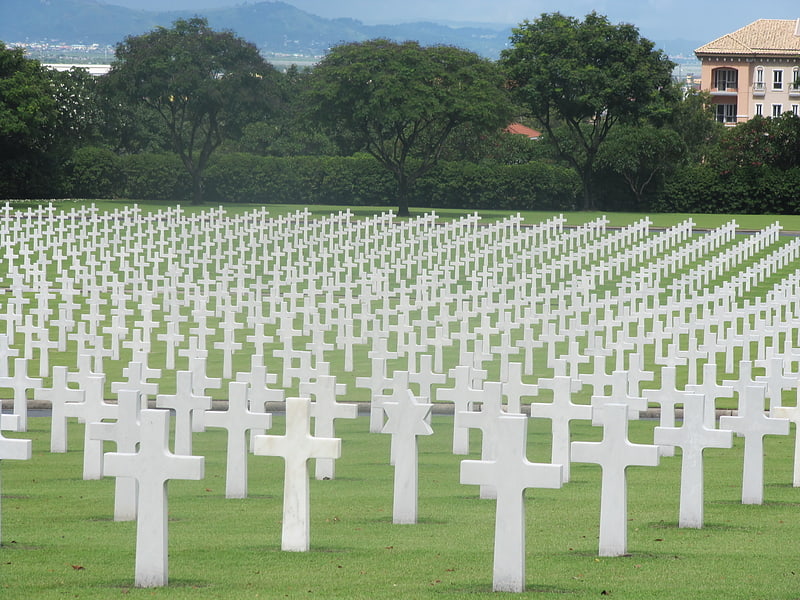
Cemetery. The Manila American Cemetery and Memorial is located in Fort Bonifacio, Taguig, Metro Manila, within the boundaries of the former Fort William McKinley. It can be reached most easily from the city via EDSA to McKinley Road, then to McKinley Parkway inside the Bonifacio Global City. The Nichols Field Road is the easiest access from Manila International Airport to the cemetery.
The cemetery, 152 acres (62 ha) or 615,000 square metres in area, is located on a prominent plateau, visible at a distance from the east, south and west. With a total of 17,206 graves, it has the largest number of graves of any cemetery for U.S. personnel killed during World War II and holds war dead from the Philippines and other allied nations. Many of the personnel whose remains are interred or represented were killed in New Guinea, or during the Battle of the Philippines (1941–42) or the Allied recapture of the islands. The headstones are made of marble which are aligned in eleven plots forming a generally circular pattern, set among a wide variety of tropical trees and shrubbery. The Memorial is maintained by the American Battle Monuments Commission.
The cemetery is open daily to the public from 9:00 a.m. to 5:00 p.m. except December 25 and January 1.
Otherwise, this cemetery has only one Commonwealth War Dead burial in World War I.[1]
Address: McKinley Ave., Taguig (Taguig District 2)
Libingan ng mga Bayani
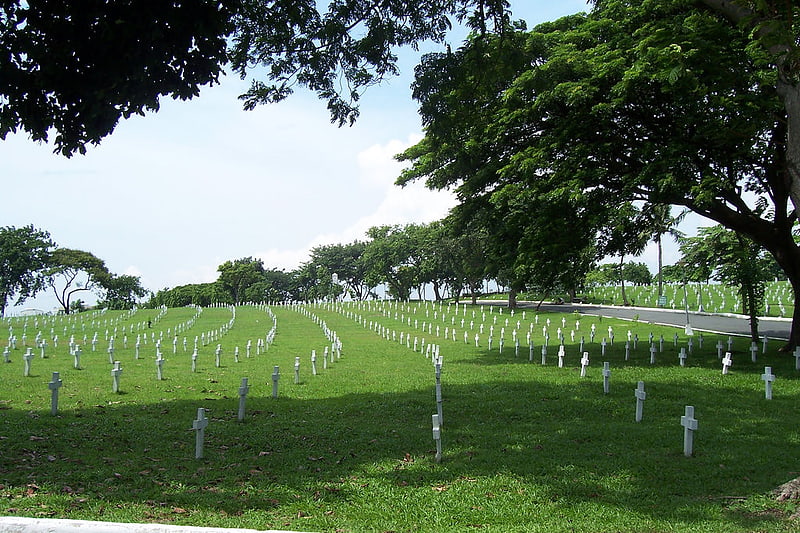
Cemetery in Taguig, Philippines. Libingan ng mga Bayani is a national cemetery within Fort Bonifacio in Metro Manila, Philippines.
First established in May 1947 as a fitting resting place for Philippine military personnel from privates to generals who served during World War II, it eventually became designated as the official place of burial for deceased Philippine presidents, national heroes, patriots, National Artists and National Scientists.
Among those buried in the cemetery are Filipino soldiers who died during the Philippine Campaign and the Liberation of the Philippines in World War II from 1941 to 1945. Among the Filipino leaders and dignitaries buried there are Presidents Elpidio Quirino, Carlos P. Garcia and Diosdado Macapagal; former Vice President Salvador H. Laurel; generals Artemio Ricarte and Carlos P. Romulo; Armed Forces of the Philippines Chief of Staff Angelo Reyes; and former Senate President and proclaimed Vice President Arturo Tolentino and Blas Ople. Ferdinand Marcos is the most recent president to be buried there, after the Supreme Court of the Philippines dismissed petitions against his burial on 8 November 2016.[2]
Address: Bayani Road, Taguig 1630, Taguig (Taguig District 2)
Philippine Army Museum

The Philippine Army Museum is a military museum located within the premises of Fort Bonifacio in Taguig, Philippines.[3]
The Mind Museum
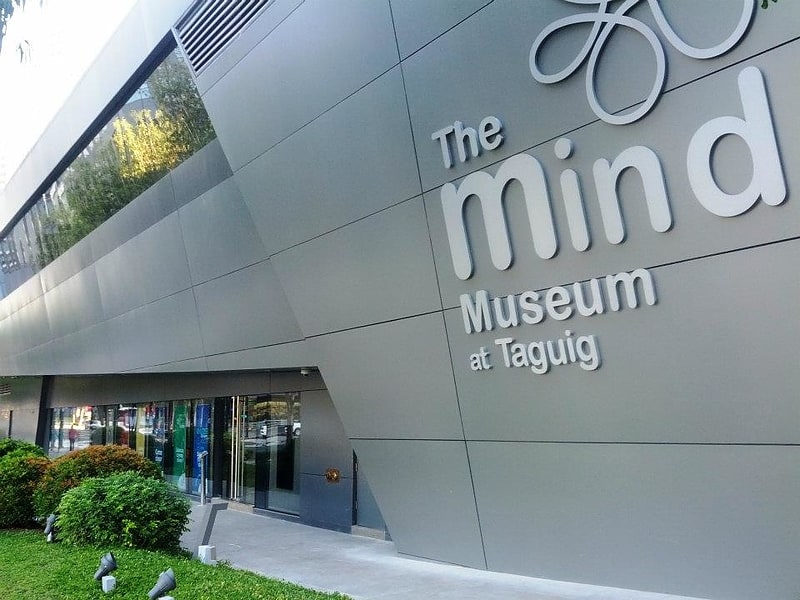
Museum in Taguig, Philippines. The Mind Museum is a science museum in Taguig, Metro Manila, Philippines. It is located on a 1.2-hectare lot in the J. Y. Campos Park in Bonifacio Global City, a business district of the city.
The museum opened on March 16, 2012, although a pre-launch reception was held a year earlier on December 15 where Vice President Jejomar Binay delivered a speech in behalf of President Benigno Aquino III. The facility was developed by the Bonifacio Art Foundation Inc (BAFI).[4]
Address: 3rd Avenue, 1630 Taguig City (Taguig District 2)
Heroes' Cemetery
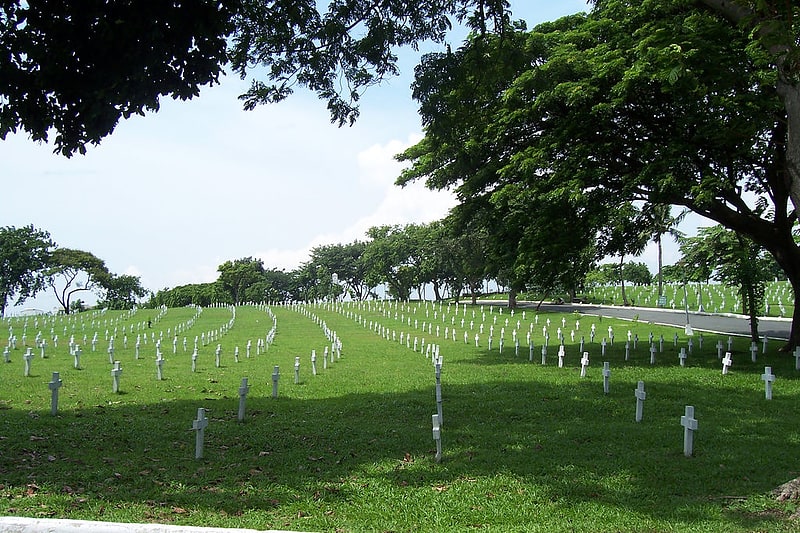
Cemetery for military and national heroes. Libingan ng mga Bayani is a national cemetery within Fort Bonifacio in Metro Manila, Philippines.
First established in May 1947 as a fitting resting place for Philippine military personnel from privates to generals who served during World War II, it eventually became designated as the official place of burial for deceased Philippine presidents, national heroes, patriots, National Artists and National Scientists.
Among those buried in the cemetery are Filipino soldiers who died during the Philippine Campaign and the Liberation of the Philippines in World War II from 1941 to 1945. Among the Filipino leaders and dignitaries buried there are Presidents Elpidio Quirino, Carlos P. Garcia and Diosdado Macapagal; former Vice President Salvador H. Laurel; generals Artemio Ricarte and Carlos P. Romulo; Armed Forces of the Philippines Chief of Staff Angelo Reyes; and former Senate President and proclaimed Vice President Arturo Tolentino and Blas Ople. Ferdinand Marcos is the most recent president to be buried there, after the Supreme Court of the Philippines dismissed petitions against his burial on 8 November 2016.[5]
Address: Bayani Road, Fort Bonifacio, Taguig (Taguig District 2)
Napindan Lighthouse
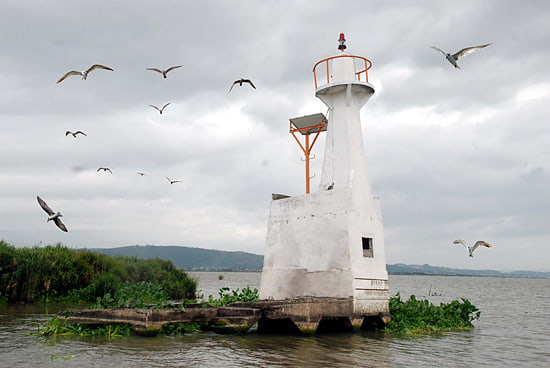
The Napindan Lighthouse was a lighthouse in Taguig, Rizal. It served as a meeting point for the Katipunan, a revolutionary group that led the Philippine Independence movement. It was destroyed during the Philippine–American War.[6]
Taguig Church
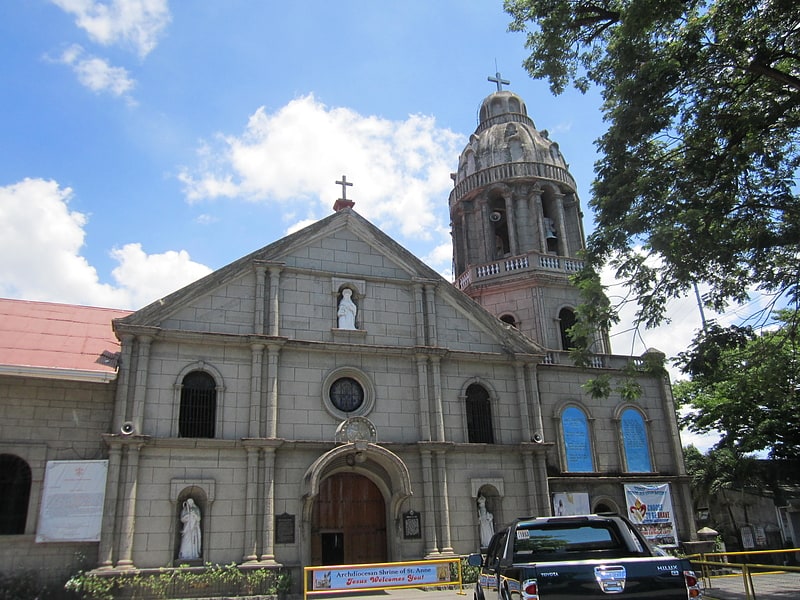
Church in Taguig, Philippines. The Saint Anne Parish Church, also known as Santa Ana Church or also known in its formal name as the Archdiocesan Shrine of St. Anne, is a Catholic church located at Barangay Santa Ana, Taguig. It is situated next to the Taguig River and across Plaza Quezon, where the statue of the late Manuel L. Quezon was erected when he was still serving as President of the Philippines. Saint Anne is the patroness of the church.[7]
Pacific Plaza Towers
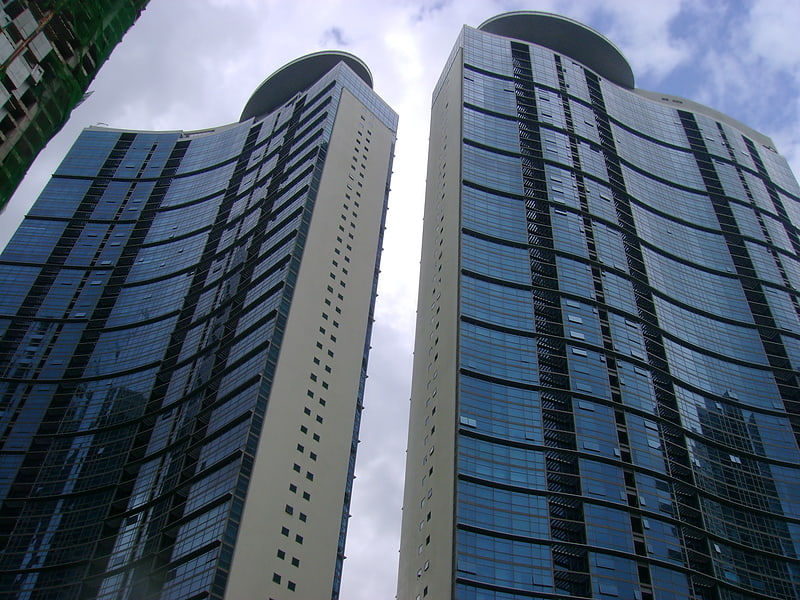
Building complex in Taguig, Philippines. The Pacific Plaza Towers are residential condominium skyscrapers located across One McKinley Place in Bonifacio Global City, Philippines. The twin 53-storey buildings, the North Tower and South Tower, were completed in 2001 and rise to 179 metres from the ground to their architectural top. They are currently the 20th and 21st-tallest buildings in the country and Metro Manila as well.[8]
Fort Bonifacio Tenement

The Fort Bonifacio Tenement, also known as the Diosdado Macapagal Tenement Housing, Western Bicutan Tenement or simply as The Tenement is a residential building in Western Bicutan in Taguig, Metro Manila, Philippines. It is known for its central basketball court which often serves as a medium for murals.[9]
Bonifacio Global City
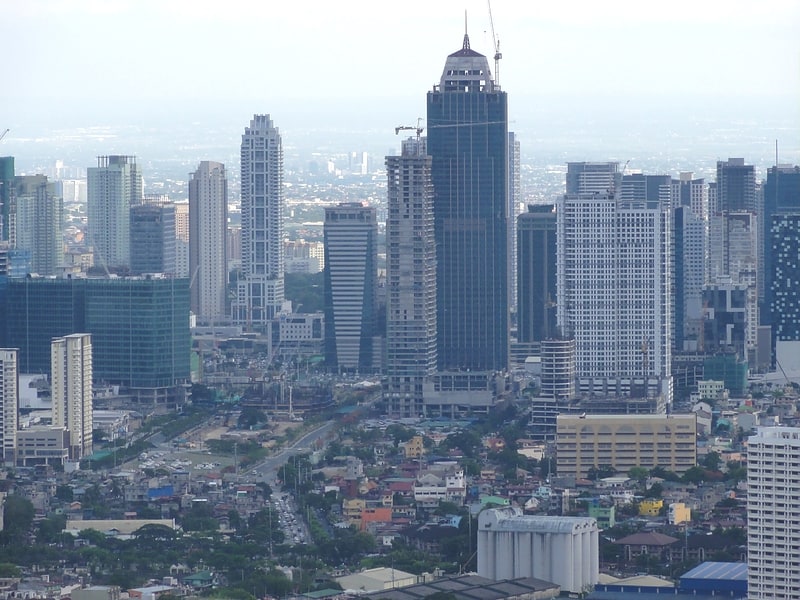
City in the Philippines. Bonifacio Global City is a financial and lifestyle district in Taguig, Metro Manila, Philippines. It is located 11 km southeast of downtown Manila. The district experienced commercial growth following the sale of military land at Fort Bonifacio by the Bases Conversion and Development Authority. The entire district used to be the part of the main Philippine Army camp.
It is under the administration of the city government of Taguig although the local governments of Makati and Pateros also claim jurisdiction.
On February 7, 1995, Bonifacio Land Development Corporation (BLDC) started planning a major urban development—Bonifacio Global City. BLDC made a successful bid to become BCDA's partner in the development of the district. The Ayala Corporation through Ayala Land, Inc. and Evergreen Holdings, Inc. of the Campos Group purchased a controlling stake in BLDC from Metro Pacific in 2003. BCDA and the two companies now control Fort Bonifacio Development Corporation, which oversees the master planning of Bonifacio Global City.[10]
Lawton Avenue
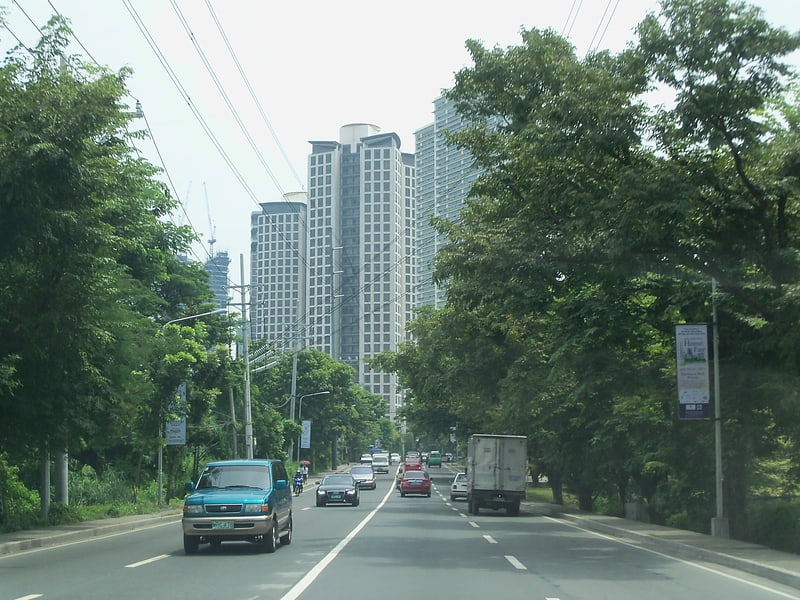
Avenue in the Philippines. Lawton Avenue, also known as Fort Bonifacio-Nichols Field Road, is the main road in Fort Bonifacio, Taguig, Metro Manila, Philippines. It follows a part of the alignment of the old Nichols route running roughly southwest to northeast from Sales Interchange to 5th Avenue and the Manila American Cemetery and Memorial. It was named after Henry Ware Lawton, a US Army general killed during the Philippine–American War.[11]